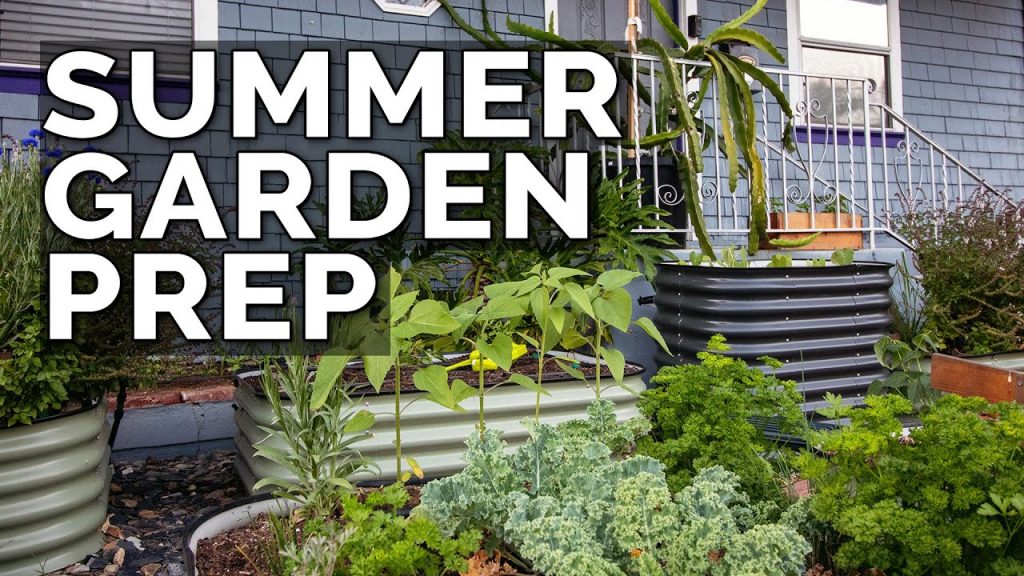Spring is a busy time if you have a garden as there is much to do.
You start preparing your garden for the summer season from spring.
The garden has to be cleaned from autumn and winter specks of dirt.
The soil structure has to be improved and manure should be added to it before you start planting and plan for a full-bloomed summer.
How to prepare Garden for Summer
One of the first set of activities in the spring is technical. All tools and machines should be tested to ensure they’re working properly.
If you haven’t serviced your lawnmowers, trimmers, and the like in autumn, you have to do so now.
Are they all working? Any tool that’s not working again should either be prepared or substituted with new garden tools.
Scissors and spades should be cleaned, lubricated, and sharpened.
Hoses and seals should be checked to see whether snow and frost have caused any damage.
How to refresh your Garden?
Either a vegetable garden or lawn, some areas would have leaves from last year on them.
These old leaves should be removed first so your garden can get the needed moist from the atmosphere and direct sunlight.
Clean your garden from fungi and spray it to remove pests and reduce the risks of diseases.
Close available holes with soil. You should also lime your lawn when there’s snow.
However, this only makes sense if the pH value of the soil is low.
You should only mow the first time when the fresh grass is five centimeters high.
Depending on the weather, this can be the case as early as mid-March. You should only fertilize after the first mowing.
You can add compost manure to add nutrients to the soil and also improve the soil structure.
If your garden is eroded, and does not retain moisture properly, then you can add mulch to correct these and also to limit weed growth.
Pulling weeds and digging up
In spring, you need to start clearing your garden and prepare for planting.
In order to get sufficient nutrients into the soil, a thin layer of compost should also be placed on the beds – two to three centimeters is okay.
Early March is the time to get the first plants into the soil. Geraniums and irises have overwintered in the plant pots and can now be moved to the garden (you should wait until May for oleanders, olives, and figs).
The first cuttings can be sown in the ground: lettuce, carrots, radishes, and spinach can be sown.
For beans, cabbage, and onions, you can start in April.
Vegetables that need warmth, such as peppers and tomatoes, should first be grown on the windowsill, they can be planted in the garden from May.
The seeds of annual flowers, such as snapdragons, sweet peas, and coneflowers, can get into the soil at this time.
Gladioli, dahlias, and lilies can be sown after the cherry blossoms.
If spring is already strong and warm, the plants need a water shower from time to time.
Pruning your Garden
If you haven’t done it yet, you should quickly take care of trees and bushes.
The fruit trees need a lime coating against frost cracks and pruning.
The longer you wait with the latter, the less time the trees have to recover from these problems, and it can lead to the crop failing.
Evergreen woods and bushes also have to be cut back in spring.
Don’t forget the roses: frozen rose shoots should be cut off until they are green. They also like fertilizing with older compost.
Pests Control in your Garden
In April, some plants bloomed, but pests also appear – snails attack the fresh lettuce, maggots are looking for carrots, onions, and the like.
Countermeasures should be taken in spring. Slug pellets help against slugs, boards between the beds should be lifted up in the morning and the clinging slugs collected.
Vegetable beds can be protected against vegetable flies with nets, and plastic hoods over freshly planted items also keep pests away.
Protection against the leaf miner should also begin now with chestnuts: a funnel trap with a suitable attractant can prevent trees from turning brown too early.
When to Move Compost?
In some cases, it is necessary that the compost has to be turned over. Spring is a perfect time for this.
In this way, the compost is optimally supplied with oxygen, and rotting is also stimulated.
All you need is a sieve on which the compost is thoroughly mixed with the pitchfork.
What remains in the sieve is put back on the compost.
Is the compost too dry? Then water should be added to it to serve its purpose well.
Providing a home for singing birds in your Garden
If you have not installed permanent nesting boxes for visiting birds, you should think about these singing visitors in your garden in spring and provide new nesting boxes for them.
Old, overwintered boxes should be removed and cleaned once.
Checking your boundaries and Fences
Not only do beds, trees, and compost are considered to care for in the garden, pathways, and fences should not be forgotten either.
It is also important here to remove weeds from pathways and fences.
Add a little gravel on roads where necessary, your fence should be checked and repaired or repainted accordingly.
Getting the garden furniture out of the garage
The first rays of sunshine not only attract you to your first work in the garden but also to linger again: Chairs, tables, and parasols have to be taken out again.
Before you can relax on them again, they too have to be made fit: clean, sand down wooden furniture and repaint if necessary.
How fit is the grill? If necessary, they should also be made fit or a new one should be acquired.
Barbecuing in good weather, with fresh grass, flowers, and a nice smell is awesome, you can feel that right, yeah!
